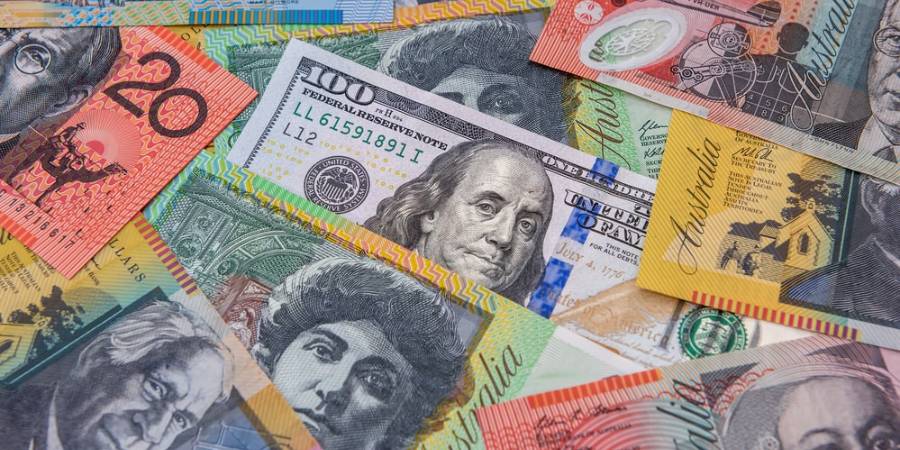Australian Dollar holds ground following release of Retail Sales, China’s PMI data

The Australian Dollar maintains its position as Retail Sales climbed 1.2% MoM in June, compared to the expected 0.4% increase.
China’s NBS Manufacturing Purchasing Managers' Index fell to 49.3, while the Non-Manufacturing PMI eased to 50.1 in July.
The Fed left its benchmark interest rate in a range of 4.25%-4.5% in July.
The Australian Dollar (AUD) appreciates on Thursday, halting its five-day losing streak. The AUD/USD pair maintains its position following the release of key economic data from Australia and its close trading partner, China.
Australia’s Retail Sales rose 1.2% month-over-month in June, compared to 0.5% in May (revised from 0.2%). The reading came in above the market expectations of 0.4%. Retail Sales climbed 0.3% QoQ in the second quarter, compared to 0.1% in Q1 (revised from 0%).
China’s NBS Manufacturing Purchasing Managers' Index (PMI) dropped to 49.3 in July, as against 49.7 reported in June. The market forecast was 49.7. The NBS Non-Manufacturing PMI eased to 50.1 in July, versus June’s 50.5 and below the estimated 50.3 figure.
Australian Dollar advances as US Dollar halts winning streak
The US Dollar Index (DXY), which measures the value of the US Dollar against six major currencies, is halting its winning streak and trading around 99.80 at the time of writing. However, the Greenback gained ground after the Federal Reserve (Fed) decided to hold its benchmark federal funds rate in a range of 4.25%-4.5% at its July meeting on Wednesday, as widely expected.
Fed Chair Jerome Powell said in a post-policy conference that the US central bank has "made no decisions" about a potential policy change in September, and it may take a bit to assess the effect of tariffs on consumer prices.
US Gross Domestic Product (GDP) expanded at an annual rate of 3.0% for the April through June period. This figure followed the 0.5% contraction in the first quarter and came in stronger than the expectation of 2.4%.
The United States and European Union reached a framework trade agreement on Sunday that sets 15% tariffs on most European goods, taking effect on August 1. This deal has ended a months-long stand-off, per Bloomberg.
US Treasury Secretary Scott Bessent said that the US and China will continue talks over maintaining a tariff truce before the deadline in two weeks, and Trump will make the final decision on any extension. Bessent tamped down any expectation of Trump rejecting the extension. It is important to note that any changes in the Chinese economy could impact the AUD as China and Australia are close trade partners.
China’s Finance Minister Lan Fo’an said on Tuesday that the country will ramp up fiscal support to bolster domestic consumption and mitigate mounting economic headwinds. He emphasized that uncertainty around China’s development environment is growing and Beijing will adopt more proactive fiscal policies to help stabilise growth.
Australia’s Consumer Price Index (CPI) rose 0.7% quarter-over-quarter in the second quarter, against the 0.9% increase in Q1 and the expected growth of 0.8%. Annually, CPI inflation eased to 2.1% in Q2, compared to 2.4% prior and below the market consensus of 2.2%.
The monthly Consumer Price Index rose by 1.9% YoY in June, compared to the previous reading of a 2.1% increase. The RBA Trimmed Mean CPI for Q2 rose 0.6% and 2.7% on a quarterly and annual basis, respectively. Markets estimated an increase of 0.7% QoQ and 2.7% YoY in the quarter to June.
Australian Dollar hovers near 0.6450 after rebounding from monthly lows
AUD/USD is trading around 0.6450 on Thursday. The daily chart’s technical analysis indicates a bearish bias as the 14-day Relative Strength Index (RSI) has moved below the 50 mark. Additionally, the pair remains below the nine-day Exponential Moving Average (EMA), indicating that short-term price momentum is weaker.
On the downside, the AUD/USD pair could find the primary support at the monthly low of 0.6426, which was recorded on July 30. A break below this level could put downward pressure on the pair to test a two-month low at 0.6372, recorded on June 23.
The AUD/USD pair may target the initial barrier at the 50-day EMA of 0.6498, followed by the nine-day EMA of 0.6506. A break above these levels could strengthen the short- and medium-term price momentum and support the pair to explore the region around the eight-month high at 0.6625.
AUD/USD: Daily Chart

Australian Dollar PRICE Today
The table below shows the percentage change of Australian Dollar (AUD) against listed major currencies today. Australian Dollar was the strongest against the US Dollar.

The heat map shows percentage changes of major currencies against each other. The base currency is picked from the left column, while the quote currency is picked from the top row. For example, if you pick the Australian Dollar from the left column and move along the horizontal line to the US Dollar, the percentage change displayed in the box will represent AUD (base)/USD (quote).
* The content presented above, whether from a third party or not, is considered as general advice only. This article should not be construed as containing investment advice, investment recommendations, an offer of or solicitation for any transactions in financial instruments.

